Say hello to Honolulu, home to the 2020 Rotary International Convention. And the best way to see this island paradise? Hang with local Rotarians and Rotaractors
It’s 8 in the morning on the island of Oahu, and Waikiki Beach is already bustling. I’m with my family taking an exploratory stroll before we meet with some new Rotary friends for lunch in Honolulu’s Chinatown. Our six year-old daughter, Bea, rolls up her sparkly pink capris and lifts her legs high as she runs through the waves.
This isn’t our family’s first trip to Honolulu. Bea has been asking to move here since we visited three years ago, when she fell in love with the temperate ocean, the golden beaches, and the perfect weather.
This trip would be a little different. This time, in anticipation of the 2020 Rotary International Convention from 6 to 10 June, we were on a scouting mission, and our guides were local Rotarians who provided us with an insiders’ perspective of this island paradise. I asked them to show us their Honolulu—their environment, their history, and their culture. We love the beach, but there are other sides of Hawaii that I don’t want you and your family to miss.
At St. Louis School in Honolulu, Bradford Ikemanu Lum sits at the front of a class of fifth-grade boys, pounding a gourd drum called an ipu heke. The boys chant in Hawaiian and dance, practicing for a May Day performance. They’re singing a song about pōhuehue vines, an indigenous morning glory found on sand dunes, that Hawaiian surfers slapped at the water’s edge to implore the gods for bigger waves. At the end of the song, Lum pounds a sharp staccato as, one by one, the boys in the front row squat down with their arms spread out wide. They look as if they are riding the waves themselves.
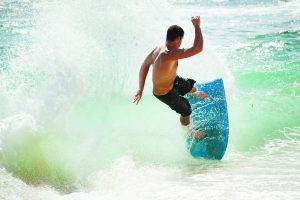
Contrary to the stereotype, hula dancing isn’t about a seductive sway of the hips; the motions go with the words of the songs. To thank them for their performance, Kanoe Cazimero chants and dances the second song of a trilogy about Pele, the Hawaiian goddess of fire and volcanoes. She moves her arms fluidly up and down to evoke the mountains and the sea. Like Lum, Cazimero is a Native Hawaiian and cultural expert; having trained and performed hula since the age of five, she will be organizing the entertainment for the Honolulu convention, which will include a performance by her brother, the singer and musician Robert Cazimero, hailed, along with his late brother Roland, as “a cornerstone of the Hawaiian music scene.”
That the class is learning about Hawaiian culture at all is a drastic change from when Lum and Ca zimero were kids. Speaking Hawaiian in schools was banned in 1896, three years after the overthrow of the Kingdom of Hawaii paved the way to annexation of the islands by the United States. As native people were encouraged to assimilate and adopt American ways, Hawaiian culture came to be viewed as backward and exotic.
It wasn’t until he was in college, where the only ethnic studies class available was devoted to Hawaii, that Lum began to embrace his native identity. Hawaiian culture experienced a renaissance in the 1970s through the efforts of people like Lum and Cazimero, sparking a renewed interest in the indigenous language, music, and art. In 1978, the state’s constitution was amended to mandate a Hawaiian education program, as well as recognize Hawaiian as an official language of the state.
When hula class is over, Lum and Cazimero take me to the Queen Emma Summer Palace, where a cool breeze provided royalty a respite from the heat and dust of the city. We discover that one of our tour guides is the son of the president-elect of the Rotary Club of Honolulu Pau Hana, where Lum and Cazimero are members.
Hawaiian culture has some key values, and, Lum points out, they dovetail with Rotary’s concept of Service Above Self. The concept of ‘ohana , or family, is very important, whether that’s your blood family, your work family, or your neighborhood family. So is ha‘aha‘a, or humility. And of course there is aloha , which many people recognize as a Hawaiian word for both hello and goodbye. But aloha has a much broader meaning, one that encompasses love, peace, compassion, and mercy. It’s so central to Hawaiian culture that the “Aloha Spirit”—defined as “the traits of character that express the charm, warmth, and sincerity of Hawaii’s people”—was codified in Hawaiian law. “ ‘Live aloha ’ is something we say all the time,” Cazimero says. “It’s not just a phrase on a T-shirt. It comes from the heart.”
The Hawaiian Islands are such a beautiful place, they have been the setting for many movies and TV shows— and Tony and Joe Gedeon seem to know the location of every one of them. As we drive through East Oahu, the father-son duo, members of the Rotary Club of Waikiki, dazzle us with nuggets from their combined encyclopedic knowledge of Hawaiian pop culture. They point out the filming sites of Magnum P.I. , Hawaii Five-0 , and the famous beach scene in From Here to Eternity; we see the home of Tom Selleck, the site of the Real World: Hawaii house, and Bruno Mars’ high school.
Our tour culminates in a drive through tropical jungle and a series of hairpin turns to the top of Mount Tantalus, where we delight in the 270-degree perspective of the island. From the Pu‘u ‘Ualaka‘a lookout, we can see Diamond Head, Punchbowl Crater, and downtown Honolulu—the same view enjoyed by Chad (Elvis Presley) and Maile (Joan Blackman) during their abbreviated picnic in Blue Hawaii. Hungry for a lunch of our own, we head back into town to sample some poke —diced marinated seafood.
We conclude our day with another meal —though with its combination of food and entertainment, a luau is far more than a meal. Hawaiians might host a luau to celebrate a birthday or anniversary the way people in other parts of the country might throw a clambake or a barbecue. The luau we attend is at Paradise Cove at the Ko Olina resort in Kapolei, and we arrive as two men pull a roasted pig out of the imu, a fire pit lined with banana leaves and hot rocks. To work up an appetite, we kick off our flipflops—slippers in local parlance—and embark in an outrigger canoe, which has a spar or float (the outrigger) projecting horizontally from the hull to stabilize the boat in the rolling ocean. After some vigorous paddling, we pause to watch a spectacular sunset over the water.
Back on shore, beneath a glowing sky and a crescent moon, we eat a variety of traditional dishes, including the succulent kalua pig— kalua means “baked in an earth oven”—and poi, a purple dish made of taro.
As a nod to this traditional family-and-friends luau, the emcee asks who is celebrating birthdays, honeymoons, or anniversaries. We see different styles of dancing from around the Pacific islands, and Bea leaps out of her seat when they ask for volunteers to hula, joining the other keiki (children) as they learn to move their hands to “stir up that bowl of poi, ” “make the motion of the ocean,” and “cast out your fishing pole and reel in your fish.” To the hypnotic beat of island drums, the evening concludes with a man twirling sticks of fire, the audience cheering as he spins and leaps and cartwheels through the magical night.
I am inside the Honolulu Museum of Art with Tina and Christina Bui. The twin sisters are both studying biology at the University of Hawaii with plans to go to medical school, and they are co-presidents of the University of Hawaii at Manoa Rotaract Club, which they joined after several years in Interact in high school.
The two young women wanted to show me the museum because it’s a favorite spot they like to visit with friends. As I wander about, I find myself lured into the museum’s Hawaiian room, which focuses less on historical Hawaiian artifacts and more on the way Hawaiian artists make sense of the modern world. The Buis in particular love the portrait gallery, where the juxtaposition of older and modern paintings accentuates the varieties of artistic styles. Interspersed among the indoor, climate-controlled galleries are themed courtyards that are works of art themselves; the Mediterranean courtyard, for instance, with fountains and teal tiles on the walls, and the Chinese courtyard, with a koi pond, provide museum visitors an opportunity to linger outdoors.
Afterward the Buis take me to see some street art in Kaka‘ako, a former industrial neighborhood about two miles from Waikiki now filled with craft breweries, coffee shops, restaurants, and, most famously, murals, making it a place to hang out that’s off the beaten path. Nearly every surface of every wall in the neighborhood is painted with murals that range from realistic portraits to cartoon “aloha monsters.” We encounter a few tourists taking selfies—and so do we.
We’re jostling with the other tourists as we listen to an audio tour and meander through the exhibits at the visitors center at Pearl Harbor National Memorial.
This may be Oahu’s top tourist attraction—two million people visit the memorial annually— but it’s also the kind of place that can give you goosebumps even as you’re surrounded by strangers. It’s a solemn reminder of the tragedy of war. But it’s also a symbol of the power of reconciliation. The Rotary clubs of Pearl Harbor and Hiroshima, Japan, formed a sister club relationship in 1982 to turn scars from the war into bonds of peace. Rotarians from the clubs visit each other’s memorial sites and plant peace trees that flourish in the two cities.
The USS Arizona Memorial straddles the submerged hull of the battleship, which sank in nine minutes during the surprise attack of 7 December 1941. The memorial was closed for repairs when my family visited. But it is anticipated to reopen in fall 2019, when visitors will once again be able to walk above the final resting place of the more than 1,000 men who died on the ship.
Meanwhile, Del Green, the 2020 Host Organization Committee chair, is pointing out the green sea turtles underwater, backlit as the sun shines behind the waves. The excitement is contagious, and I scream too as I see an occasional flipper or head peek out of the water. “They bring out the child in all of us,” Green admits.
We’re on Laniakea Beach on Oahu’s North Shore, often called Turtle Beach for the green sea turtles that feed here. The turtles, called honu in Hawaiian, reach lengths of three to four feet and weigh in at 200 to 500 pounds. You can’t miss them at the Honolulu convention: They’re featured on the convention logo.
We’re midway through our circle tour of the island with Green, a member of the Rotary Club of Downtown Honolulu, and his girlfriend, Diana Doan, who’s a member of the Honolulu Pau Hana club. When they picked us up earlier in the morning, Green and Doan greeted us by kissing our cheeks and putting purple and white flower leis around our necks, a welcome we encounter several times on our trip. Hawaiians seem to give leis whenever they have an excuse: as a greeting, a thank you, or to recognize an achievement. Lei shops can be found in Chinatown and at the airport, and the adornments can be made with not only flower petals but also nuts, shells—or dollar bills. The host committee, Green says, is planning to have Rotarians help make the world’s largest lei out of paper money from their countries, with the proceeds to go to End Polio Now.
As we drive from Honolulu, Green explains that people here don’t use the words “east” and “west” as directionals, as they do on the mainland. Instead they reference geographical landmarks: “Diamond Head” for east and “Ewa” (pronounced eh-va, for Ewa Beach) for west. And then there’s mauka and makai, which mean “toward the mountain” and “toward the sea.”
Along the way, we’ve passed so many gorgeous beaches that I’ve run out of colors to describe the water: It’s aqua and shimmering at a lookout past snorkeling hot spot Hanauma Bay—“Whoa, it’s like the water is glitter,” Bea exclaims—and the turquoise of a Blue Hawaiian cocktail at Sandy Beach Park, famous for its daring, and dangerous, bodysurfing.
Between the beaches, we admire the majestic Ko‘olau mountains, verdant cliff faces with wrinkly folds like fingers that have soaked far too long in the tub. It’s just before lunch, and in the midday light the mountains look almost two-dimensional, as if they were a backdrop for a movie. (In fact, they were the setting for Jurassic Park , among other films.) Even Green, a local, stops midsentence at least three times during the drive to admire them. “Aren’t they beautiful,” he exclaims. We pass a parking barrier painted with the phrase “Aloha is a lifestyle”—a sentiment the people we’ve met on our trip fully endorse.
After we fly home to wintry Wisconsin and Bea goes back to school, her kindergarten teacher asks her to write in her journal about our trip. This time, it’s not the beaches, the ocean, or the incredible weather she recalls. Instead, she writes about our day hanging out with Del and Diana. Even my six-year-old recognizes that, as many natural wonders as the islands have to offer, the best part about a Rotary convention is the people you meet.
Read the full story in the September 2019 issue of the Philippine Rotary magazine.


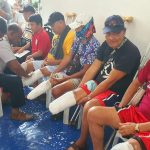


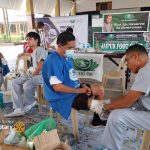


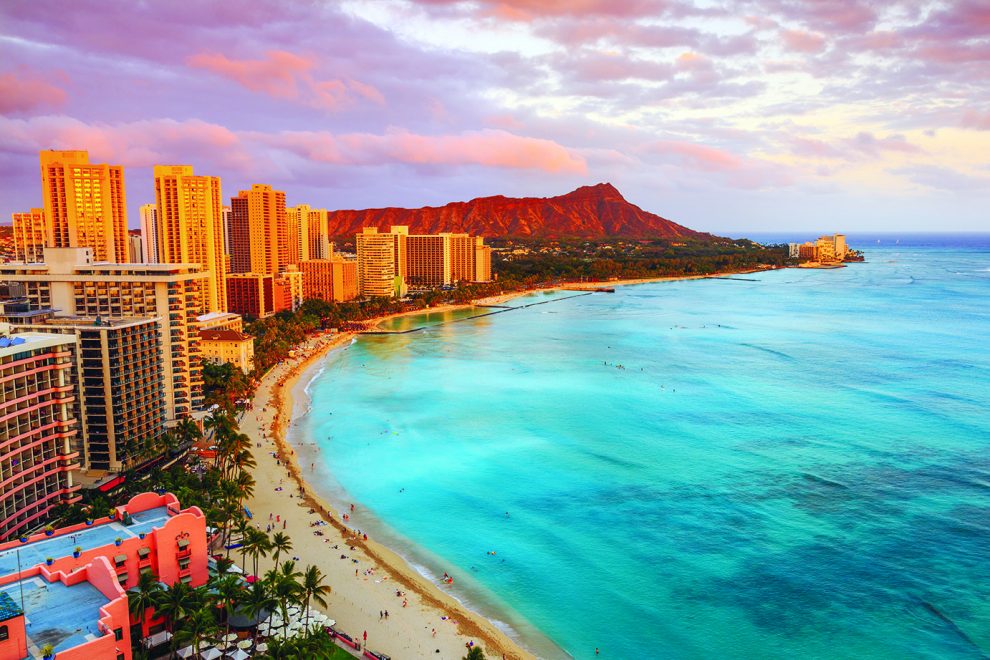
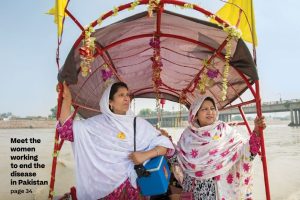
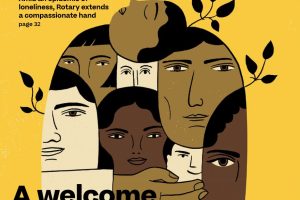
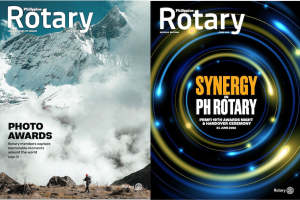


Add Comment